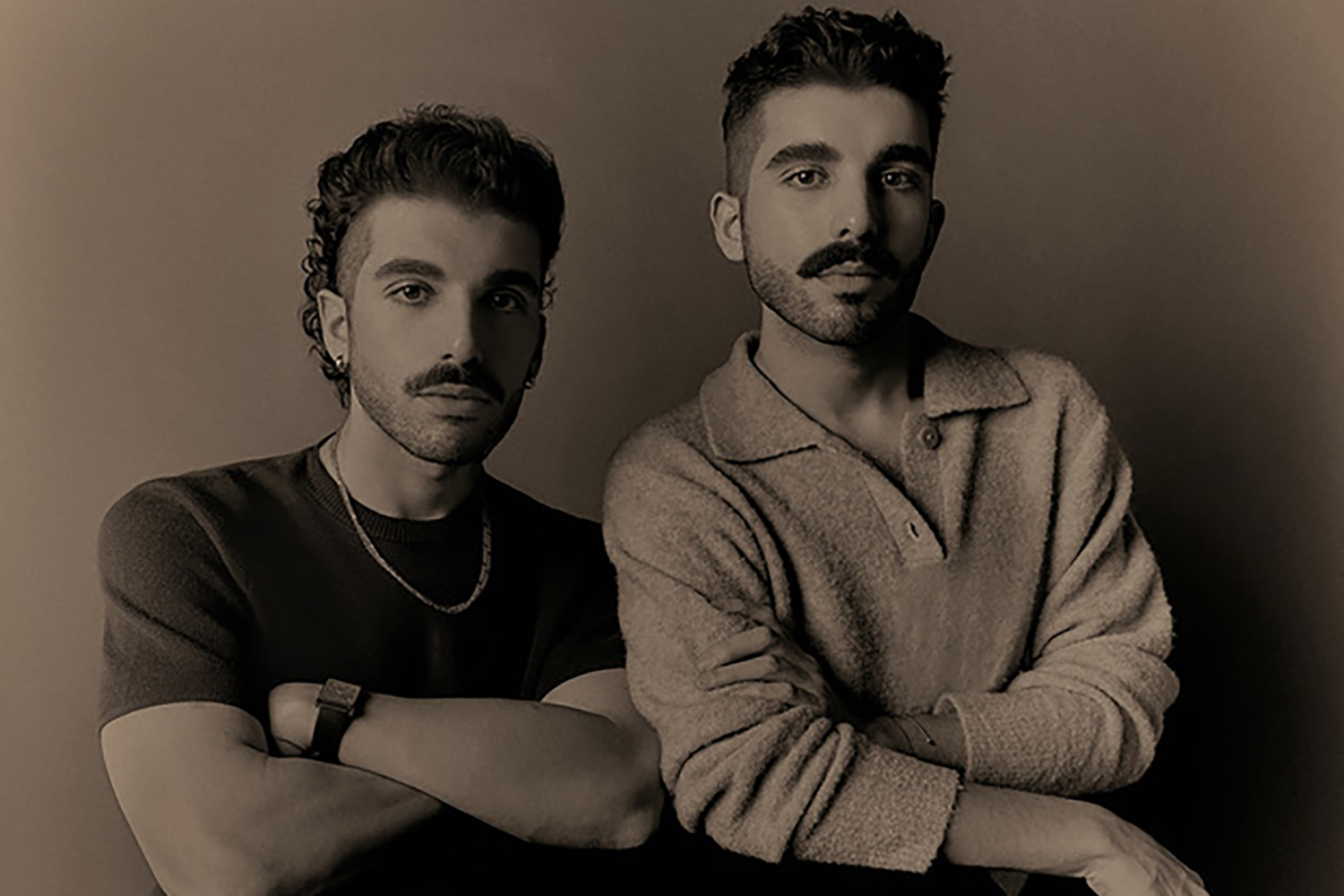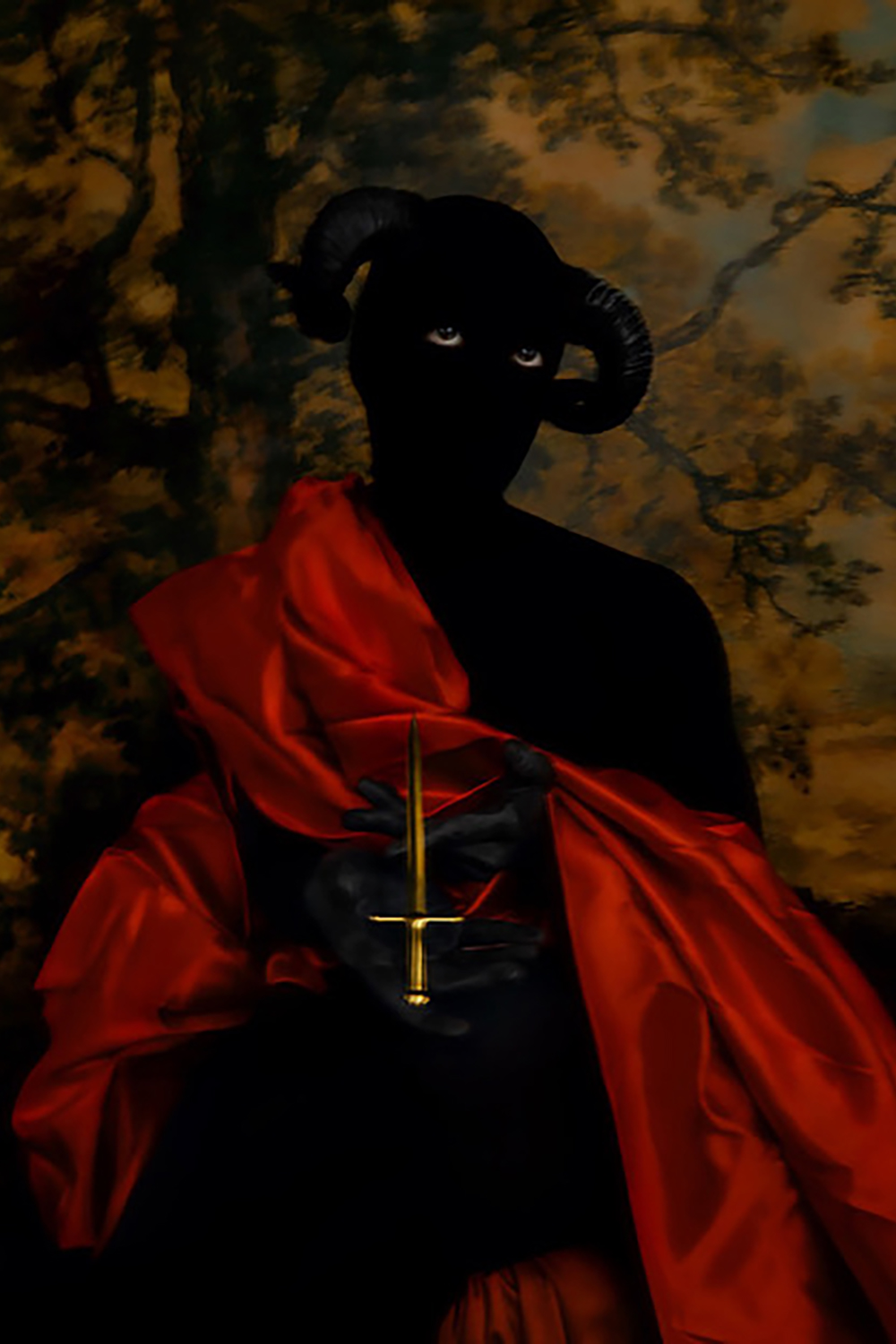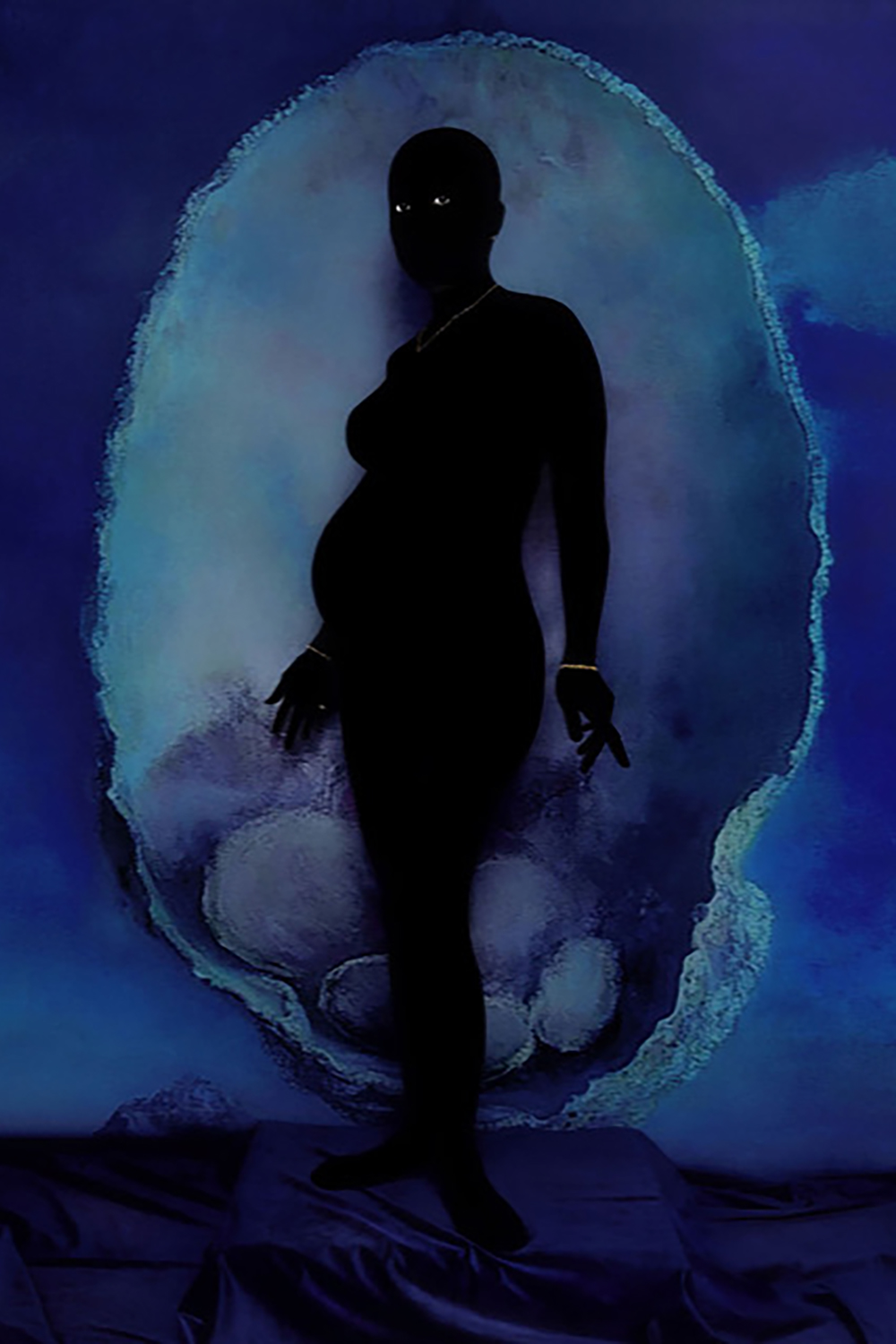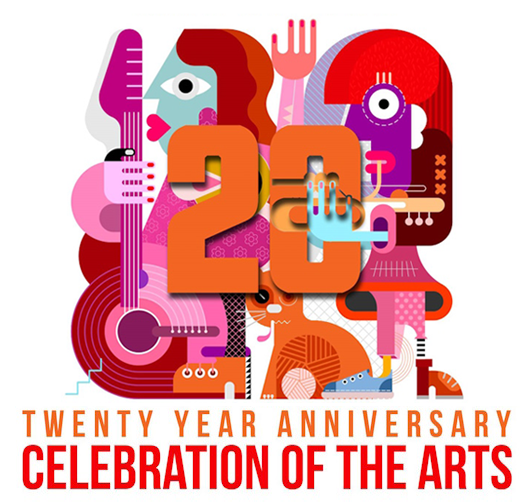
Elliot and Erick Jiménez (Images courtesy of the artists, Elliot and Erick Jiménez)
"Our work is rooted in our experiences as Cuban-Americans, but it’s also about broader questions of identity, belonging, and the power of duality,” according to Elliot and Erick Jiménez, identical twin artists, who are working in tandem on their first solo photography exhibition. "Elliot & Erick Jiménez: El Monte" opens Thursday, Aug. 28 at the Perez Art Museum Miami (PAMM).
After gathering core information, I now needed to encapsulate the show’s messages without giving in to temptation and going off into every fascinating side road encountered in the research.
This exhibition will awaken new questions and interests, your need for knowledge will expand, which is the proper response to a successful museum program.
The exhibition’s title “El Monte” (the Mountain, or the Wilderness), was taken from revered Cuban author Lydia Cabrera’s 1954 book of the same name. It was coined the “Santoria bible” because of its comprehensive coverage of Afro-Cuban religion as well as a botanical encyclopedia for herbalists. (Yes, there is an English translation of the Cabrera book as of 2023.)
Elliot and Erick were born in Miami to Cuban immigrant parents, brought up primarily by their grandmother, surrounded by the spiritual practices of family and community. Santoria, or La Regla Lucumí, an Afro-Cuban religion, was brought to Cuba through the Atlantic slave trade. Lucumí overlaps Santeria, Yoruba and Roman Catholic elements, still a viable practice both here and in the Caribbean. The new photographic work at PAMM is heavily influenced from the artists background in Lucumí.

'Who is the Knife' and 'Who is the Ram' (Images courtesy of the artists, Elliot and Erick Jiménez)
I spoke with PAMM curator Maritza Lacayo on the depth of messaging nestled in the work of the Jiménez duo’s sensibilities. A shake up of family norms stemming from the immigration experience begins a new growth and expansion that is not an easy shift as it creates a whole new middle ground of who “we” are.
“This show offers a view of Caribbean history shaped by that very complexity — one of dual identity, of being neither fully from here nor there, but navigating the space in between,” says Lacayo.
Talking with the curator got me to wondering how many new middle grounds, or “spaces in between” are created, new and smaller groups of who we are via similar blended experiences. It appears we are grappling with the idea of “other-ness” with difficulty. One hopes knowledge transfer, which is the purpose of museums and galleries, can help bridge gaps, soften fears or anxiety created from contrasts in the unknown of everyday viewpoints and opinions.
The two artists clarify: “A recurring theme in our work is transculturation a term coined by Cuban anthropologist Fernando Ortiz, Cabrera’s brother-in-law. It describes how cultures merge, transform, and create something entirely new. As children of immigrants raised in Miami, our work reflects this ongoing process. Interpreting the spiritual culture of the island from a different country and perspective, shaped by diaspora.”
Lacayo adds, “As a curator, I have focused the vast majority of my exhibitions on either artists from Miami or in some way that connects the city in a very specific way. This is a priority of PAMM in terms of mission and vision.”
I asked the curator how PAMM came to choose these artists for their solo debut.
“I felt that the work spoke to a segment of the community we (PAMM) hadn’t had an opportunity to connect with yet . . . Santoria practitioners and people associated with it. It’s prevalent in Miami but a little bit taboo to talk about.” (The brothers) were open and honest about being raised in the tradition. I thought this was an interesting way to speak to our community, bring in a new audience and to highlight the photography.”

Birth of Venus (Images courtesy of the artists, Elliot and Erick Jiménez)
She says of the Lucumí language, a lexicon of words and phrases used as the liturgical language of Santería in Cuba, “Lucumí is community-driven. Oral traditions are passed down from one generation to another.”
The PAMM curator pointed out how heavily researched the work is. Every detail means something. Colors reference Orishas (gods or spirits worshiped by the Yoruba people) as do the cowry shells and specific flowers.
“They (the images) can pull you in and hold you there for a long time. There is no editing, no photoshopping, it’s all tangible.”
I asked how the exhibition "El Monte" was curated to “read” as visitors pass by the pieces.
“ Its a mysterious and whimsical space . . . not the traditional white cube ‘hang.’ We’ve built a structure in the middle of the space that will be covered with a material, making it look like the base of the giant Ceiba tree, sacred to the Lucumí tradition. Works will hang not only on the tree, but you can walk inside the sculpture and feel like you’re actually on the inside of a chapel. Different experiences and moments will make you feel as if you are in the “monte” (the wilderness). If you enter a different way, the mood is a more traditional chapel complete with an altarpiece. The photographs become part of one large functioning installation created for this one piece.”
Elliot and Erich take us into their personal connection: “The towering Ceiba tree is sacred in Afro-Cuban cosmology and believed to connect the heavens, earth, and underworld. Inside the tree, visitors encounter a space representing the shared womb of twins, which holds the Ibejí Chapel. This chapel is dedicated to the divine twins of Lucumí, who symbolize duality, balance, and sacred siblinghood. The Ibejí (twin deities) hold deep personal meaning for us, as twins ourselves.”

El Monte (Ibeji) (Image courtesy of the artists, Elliot and Erick Jiménez)
Since the exhibition is not yet open for viewing, curator Lacayo sets the scene for me: a darkened, candle-lit spiritual feeling, giving people an opportunity to slow down, absorb the photos. Time becomes lost as you give yourself over to the depth of Elliot and Erick Jimenez’s inner sanctum.
“Everything will be labeled to teach people which ‘Orisha’ (god or spirit) is being referenced, what the colors represent, and what Lucumí actually means,” says Lacayo.
I wanted to know what artists influenced the duo besides author Lydia Cabrera.
According to Lacayo:“Two women artists. Not a coincidence since the twins were raised in a matriarchal family. The most obvious is Belkes Ayón, a Cuban printmaker who did collagraphs based on Abakuá, a secret all-male Afro-Cuban society. And Ana Mendieta, a Cuban-American performer and sculptor focused on the female body and nature.”
Elliot and Erick lean toward the dark and mysterious . . . “allowing for the viewer to put their own interpretation over it,” Lacayo added as a postscript.
The modern work blends their background in fashion, advertising, and fine art, appearing in TIME, Vogue Italia, Vogue Mexico, Harper’s Bazaar Italia,10 Magazine and, in 2023, they photographed musician Bad Bunny for TIME’s first Spanish cover in the magazine’s 100-year history.
The fashion element comes through, hinting at their background. In this exhibition, they collaborated with fashion designer Willy Chavarria, with whom they have previously worked.
Take yourself out of the heat and give the brain something else to focus on. This will not waste your time.
"This exhibition is what it looks like when heritage, diaspora, and imagination converge to make something entirely new.” Elliot and Erick Jimenez
"But there is no energy unless there is a tension of opposites; hence it is necessary to discover the opposite to the attitude of the conscious mind.” Carl Jung
WHAT: "Elliot & Erick Jiménez: El Monte"
WHERE: Perez Art Museum Miami, 1103 Biscayne Blvd., Miami 33132
WHEN: 11 a.m. to 6 p.m., Monday, Friday, Saturday and Sunday, 11 a.m. to 9 p.m., Thursday. Closed Tuesday and Wednesday. Opens Aug. 28, 2025 through March 22, 2026
INFORMATION: (305) 375-3000 or www.pamm.org/en/visit




